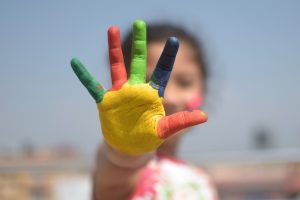
Inclusive education means that all children have access to learning regardless of their social background, economic status, physical abilities or any trait which may potentially hinder them from their right to education. While this is a recent phenomenon influenced by Montessori methods and research on learner-centered classrooms, the shift actually has roots that go back hundreds of years to the one-room schoolhouse. It was formerly thought that all children learned in a similar way and at the same pace. It was only when achievement tests were introduced in 1912 that the disparity in the students’ grades became glaringly obvious.
Brief Background of Differentiated Instruction
The 1975 Individuals with Disabilities Education Act (IDEA) act brought attention to education tailored to the needs of the disabled. It increased educational outreach to the general public, and especially the disabled. To accomplish this, teachers used a variety of differentiated instructional techniques. The “No Child Left Behind” policy in 2000 further emphasized differentiated instruction and a skills-based approach to education.
Four Ways of Differentiating a Classroom
Carol Ann Tomlinson is a leading name in the field of education who puts learners at the center of learning. Tomlinson proposes four ways in which education can be differentiated to address individual needs:
- Content
- Process
- Product
- Learning environment.
Let’s look at these more closely.
Content
Based on Bloom’s Taxonomy for categorizing educational goals, content can be modified and adapted as follows: learners who have trouble mastering concepts may be given exercises at the level of remembering and understanding. For example, they may be given a task to match vocabulary with its definitions and read a passage and answer the comprehension questions. Learners who have some mastery, may be asked to imagine a different outcome to a story and differentiate fact from opinion. The advanced learners or those at the level of higher order skills may be tasked with exercises which demand evaluating and creating, such as identifying an author’s stance and providing evidence to support their supposition or creating a PowerPoint which summarizes the story.
Process
Research supports the theory that students prefer different learning styles (visual, auditory, oral, kinesthetic or tactile) and this knowledge can help teachers plan lessons around individual needs. Some students may require more teacher support whereas others may benefit more from working in pairs and groups. Classrooms can be differentiated for process through:
- Textbooks with good illustrations and clear print
- Provisions for audio learners to listen to the content through tapes
- Interactive activities for kinesthetic learners
- Gadgets for tactile learners, such as tablets, keyboard computers or mobile phone devices
Product
The product refers to what the student has learned at the end of the lesson, reflecting the lesson objectives, and how the student demonstrates their learning. The end product can also be differentiated in a variety of ways:
- Learners who enjoy reading can write a book report.
- Visual learners can create a story board or create a graphic on the computer.
- Auditory learners can give an oral report, record it and play it back in class.
- Kinesthetic learners can create a diorama or a three-dimensional model of the story.
Learning Environment
Learning occurs best when students feel safe, both physically and emotionally. Students can be appreciated for achieving targets such as mastery of learning goals while those who are still struggling can continue to be supported.
Here are some ways this can be achieved:
- The organization of the classroom, colorful pictures, and the display of students’ work creates an atmosphere for learning.
- A high quality curriculum which challenges and promotes understanding, is relatable and flexible in terms of students’ needs, and uses technology, is conducive to effective learning.
- Ongoing assessment that informs instruction. Tomlinson and Imbeau have defined assessment as the process of gathering data and performing analysis that helps to inform future planning for instruction and skill focus as well as help determine the student’s achievement in essential outcomes.
Differentiated instruction is an evolving process which teachers need to adapt to their specific context. While teaching is a challenging job, differentiating classrooms to address individual needs makes the process both meaningful and rewarding.
Further Reading
https://pdo.ascd.org/LMSCourses/PD11OC115M/media/DI-Intro_
https://resilienteducator.com/classroom-resources/examples-of-differentiated-instruction/

Thanks for a very interesting article on Differentiated Instruction. I have a presentation coming up on this topic next year on Achēv, and I have collected many examples on how this can be achieved with the aim of providing best support in a ‘learner centered’ classroom.